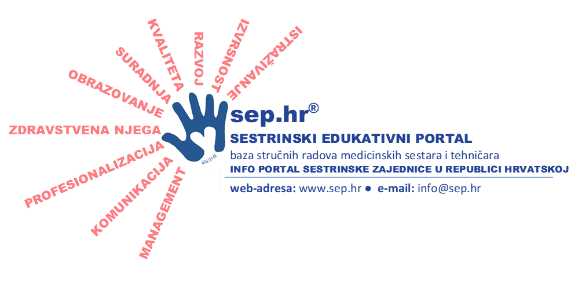Autori: Kirsti Tøien
Ustanova zaposlenja: NORWAY
Ključne riječi: trauma patient, post traumatic stress symptoms
Kongres/Simpozij: ”5. Međunarodni kongres HDMSARIST-a” i ”8. Međunarodni kongres WFCCN-a”
Mjesto i vrijeme održavanja: Šibenik, 12.-15. travnja 2012. godine
Background
Trauma intensive care patients have experienced a traumatic event with injury and an intensive care unit (ICU) stay, which often is experienced as stressful. Many patients suffer from posttraumatic stress (PTS) symptoms after discharge.
The aim of the study was to investigate the level and predictors of posttraumatic stress (PTS) symptoms the first year after trauma, and memories from the ICU stay.
Method
Prospective one-year follow up study of 150 injured ICU patients in a Norwegian trauma referral centre. Forty eight days (median) after the injury, and three and 12 months later, the patients completed a questionnaire consisting of Impact of Event Scale (IES) and the ICU memory tool.
Results
Mean age was 40 years (95% CI 37.4 – 42.6) and 70% were male. Mean Injury Severity Score (ISS) was 23.1 (95% CI 21.0 – 25.1). Fifty-nine percent of the patients had mechanical ventilation. Forty-six percent of the patients had an IES score ³ 20 at baseline, decreasing to 42% at 12 months. A subgroup of 22 patients (24%) increased 10 points or more on IES during the year. Significant predictors of an IES score ≥ 20 at twelve months were female gender (OR 2.95, 95% CI 1.04 – 8.34, p = 0.042), factual memories from the ICU (OR 6.6, 95% CI 2.0 – 21.5, p = 0.002). Protective factor were high education (OR 0.2995% CI 0.10 – 0.86, p = 0.025) and having care of children (OR 0.14, 95% CI 0.04 – 0.47, p = 0.002). Seventy percent of the patients had factual and 31% had delusional memories from the ICU stay.
Conclusion
A large proportion of patients suffer from PTS symptoms after trauma and ICU stay and about 24% have delayed symptom development. PTS symptoms are predicted mainly by female gender, low education and factual memories from the ICU stay.
